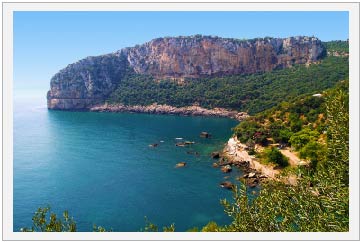|
Bejaia, « Bgayet » in bereber; « Bougie » is the ancient French name of the city because of the sciences and knowledge that the city had, Saldae was its name during the Roman Era and Vaga (blackberry- bush in libyco-berber) is an Algerian city. It is the center of the wilaya (destrict) that has the same name. Inhabitants of Bejaia are called “Bougiotes” or “Bédjaouis”. With its 210 000 inhabitants in 2006, Bejaia is the largest city of the kabyle region in term of population. |
 |
|
Thanks to its geographical location, it is considered as the most important industrial pole of the region, particularly by the focus of several industries in the area and the existing of one of the most important oil and trading ports of Mediterranean region. Bejaia has also an international airport, code AITA: BJA). (Soummam / Abane Ramdane). It was known during the Roman Era as Saldae, and it becomes in the middle ages one of the most flourishing cities in the Mediterranean coast, capital of the great Muslim dynasties. Firstly it was known in Europe thanks to the good quality of its candles made of beeswax which its name is derived from; Bougie had also played an important role in the dissemination of « Arabic numerals » in the West.
|
|
EtymologyThe word bougie appeared in the French language in the XIVe century. Derived from the word Bugaya, this Algerian city had provided a large quantity of wax for the candles industry. The candle as it was developed in the middle XIXe century had distinguished itself from the candle by the raw material and the use of a braided cotton wick. The braiding allows the wick to bend and burn out: so, no need to blow it. So the miserable candle has disappeared and the wax lost its interest. |
 |
GeographyThe region which we underline the history is bordered approximately at the West by the peaks of Djurdjura, in the East by the Babors to which the Bibans are attached and that expand to the Southern East, and dominating the plains of Médjana and Bordj-Bou-Arreridj. A valley, where the Soummam river is winding, separating between the Babor-Biban and Djurdjura, leads toward the South at Ighrem, El Asnam, to a rich plain planted with olive trees and fruit trees, vineyard and other cultivations. The Gulf of Béjaïa, On the edge of which the city rises in amphitheater, shows a landscape of a vast lack surrounded by a mountain range: firstly the ridge Gouraya that dominates the city ; at its right the peak of Toudja ; in front and following the ellipse of the coastline we notice the peak of Bou-Andas, the rocky serrations of Béni-Tizi, Djebel Takoucht, Adrar-Amellal, Tizi-Uzerzur, the wide croup of Babors next to the peak of Tababort ; finaly, a blueish silhouette of Jijel.
|
|
|
When we go far from the city toward Ziama, the gorges of Chaabet-EI-Akhra, we go through a distance of more than thirty kilometers which is the semi circle formed by the Gulf. The road which runs parallel with the riverside crosses a fertile plain overcame by green picturesque places with thick vegetation. The borders of Soummam river that we cross are covered by gorse and oleander separating its banks with wonderful gardens full of fig trees, olive trees, orange trees, apricot trees and others,
|
 |
|
All that shows in these places an intelligent pulse, a lot of initiatives and seriousness in work. After Souk-el-Khemis and its gentle plain, the strip extends along the shore that becomes gradually narrow to lead toward the road to the gorges in the Southern-West.
|
|
|
The gorges show a wonderful landscape with its beauty and proportions. The harshness of overhanging rocks, the severity of mountains rising in both banks of the stream that whispers in the abyss, The road constantly suspended on the abyss, sometime dug in the side of the mountain, sometimes built on masonry arches at the hard places of the side, different varieties of birds, like black points up there in the sky and they seem to fly on the top of the world, they make feel the fragility of the human being among this beautiful landscape, and none of those who cross it can feel no anxiety ; it is without doubt for this reason that we call it « Chaabet-el-Akhra ».
|
|
|
When we climb the slope of Gouraya and achieve the mausoleum, we enjoy a unique view. Down there, the city appears like a small village of Lilliputians. In the opaline steam of the morning, the skyline desappears and the sky seems to merge with the sea. Toward the southern West, on the side of this mountain, we can see Toudja embedded in the greenery where Inexhaustible sources flow among secular orange grove; and in front, the Babor and Biban mountains littered with a multiple villages like very small points. |
 |
|
When the sun disappears in the horizon, it leaves golden sparkling clouds, all these mountains are composed of different bright colors and they are reflected clearly on the transparent sheet; this majestic sight tarnishes gradually under the influence of wet steam of the sea going by varied shades. The roadstead offers to this enchanting spectacle a haven to ships and fishing boats which is uncommon to the Mediterranean coasts. It is without doubt, for these reasons that the Phenicians have chosen this place for one of their trading posts, that the Romans maintained and an-Nacer ibn Hammad (des Hammadides) built his capital. |
|






